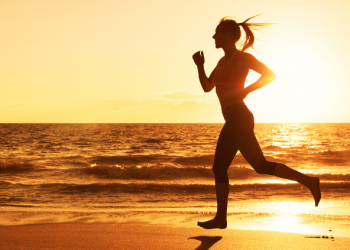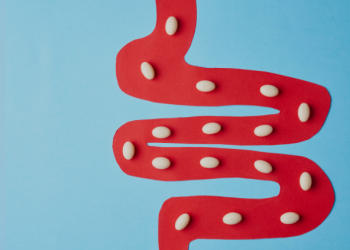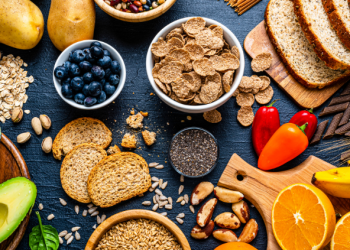Supplements for Elite Athletic Recovery
By Caitlin Aguirre, Adrian Vallejo, Matthew Kaufman, MD

This blog is part of our Supplements newsletter. If you like this content, sign up to receive our monthly newsletter!
Key Takeaways:
- It is recommended to consult with a medical professional before taking the supplements listed in this blog.
- Branched Chain Amino Acids stand out as a well-supported supplement for athletic recovery, aiding in faster physical recovery, decreased fatigue perception, and maintenance of lean mass. Recommended dosages range from 10 – 30 grams per day.
- L-theanine shows promise in mental recovery post-exercise, with suggested doses ranging from 50 – 200 mg per day.
- N-acetylcysteine’s role in reducing perceived muscle soreness remains uncertain, with doses of 1200 – 1800 mg per day utilized for supplementation within existing studies.
- Turmeric shows promise in alleviating muscle soreness at doses ranging from 1.5 – 5 grams of turmeric extract daily, although research is conflicting. Supplementing with piperine (black pepper) may enhance its effectiveness.
- Ashwagandha holds the potential to reduce muscle soreness and improve athletic and mental recovery at a dose of 600 mg daily. While research on its effects is limited, current evidence suggests it’s generally safe for supplementation.
For high-performance athletes, achieving peak performance is not solely a result of pushing one’s physical limits. Even the best competitors experience fatigue, musculoskeletal pains, exercise-induced muscle dysfunction (EIMD), and delayed-onset muscle soreness (DOMS) that may impact their ability to sustain maximal training efforts and combat injury. In response to these physical ailments, often a sign of our bodies adapting to higher training loads, high-performance athletes have mastered the practice of athletic recovery.
The principles of athletic recovery can be thought of as a pyramid having a base of quality sleep, balanced nutrition, and hydration. These elements are the foundation upon which adapting to the demands of intense training is built. However, as committed athletes refine their sleep hygiene, prepare macro-friendly meals, and hydrate appropriately, they often look to ascend this metaphorical “athletic recovery pyramid” by utilizing nutritional supplements to gain an edge over their competitors. Previous literature has estimated that 40 – 100 percent of trained athletes have employed nutrient supplementation, depending on the definitions of trained athletes and supplementation.
In this blog post, we’ll explore the role of popular anti-inflammatory and antioxidant nutritional supplements, including BCAA’s, L-theanine (LTE), N-acetylcysteine (NAC), Turmeric, and Ashwagandha, and what role they may play in athletic recovery.
What are Branched Chain Amino Acids (BCAAs)?
BCAAs are a specific class of amino acids that have branched side chains. These include amino acids like leucine, isoleucine, and valine. Studies suggest that BCAAs are among the most commonly used supplements in trained athletes. These essential amino acids are broken down for fuel during exercise, and supplementation has been thought to provide substrate for anabolic (muscle-building) processes to prolong energy sources and protect against muscle damage and fatigue. Rather than a supplement, you may also consume BCAAs by eating foods high in leucine, such as salmon, chicken, cottage cheese, eggs, nuts, lentils, and beans.
Potential Benefits of BCAAs for Athletic Recovery
- Faster recovery – Compared to placebo groups, individuals who supplemented with BCAAs recovered a greater amount of their maximal isometric force after 1 – 4 hours following acute exercise.
- May decrease perception of fatigue and soreness following exercise after 24 hours.
- May increase maintenance of lean mass while losing fat mass in hypocaloric settings.
- May support more effective training sessions by prolonging time and reps to fatigue. One study also found that BCAAs increased some participants’ power with bench press.
Our Recommendations
BCAAs are a supplement well supported by scientific literature that can shorten recovery time and decrease perceptions of fatigue. As an athlete, this may maximize athletic results by supporting the ability to continue long training sessions and return to sport quicker!
Dosing
Studies have shown positive outcomes with BCAA supplementation ranging from 0.087 – 0.22 grams per kg of body weight per day for at least eight days. Positive effects were also shown when the athlete took 20 grams one hour prior to exercise. While there’s no apparent consensus on the optimal dosing strategy, studies show that taking between 10 – 30 grams per day had no noted ill effects.
What is L-theanine (LTE)?
LTE is a non-proteinogenic amino acid that is structurally similar to glutamate. It is a primary component of the Camellia Sinensis plant, which is used to make green tea, and can also be found in smaller quantities in other foods, such as mushrooms, apples, and red wine.
Potential Benefits of LTE for Athletic Recovery
- May support mental recovery by promoting relaxation and return to a non-arousal state after exercise.
- May decrease perceived anxiety levels and support mental well-being, a crucial aspect of preventing burnout and sustaining high-intensity training.
- May help combat immunosuppression associated with overtraining syndrome (OTS), which is the suppression of one’s immune system following prolonged periods of high-intensity exercise. OTS may leave athletes susceptible to minor illnesses like upper respiratory infections.
Our Recommendations
Since mental restoration following strenuous training or competition is vital for preventing burnout and enabling athletes to maintain a consistent level of high-intensity training, we recommend a supplement that provides mental recovery. Current evidence shows that LTE has the potential to aid mental recovery, however, further studies on larger sample sizes of athletes may be necessary for a comprehensive recommendation.
Dosing
Although there is no clear agreement regarding the best dosing strategy for LTE, the studies examined in this review have demonstrated physiologic benefits with doses ranging from 50 – 200 mg per day. Within this range, LTE is considered safe for consumption and has demonstrated no toxic effects in both human and rodent studies.
What is N-acetylcysteine (NAC)?
NAC is a synthetic derivative of the naturally occurring amino acid L-cysteine. In the body, L-cysteine and NAC have direct antioxidative properties and serve as precursors to glutathione (GSH), another powerful antioxidant that prevents excessive molecular damage.
Potential Benefits of NAC for Athletic Recovery
- May reduce perceived muscle soreness – Numerous studies evaluating the effects of NAC supplementation have shown mixed outcomes regarding the benefits of its antioxidative properties and ability to reduce muscle soreness.
Our Recommendations
Further investigations are necessary before clear conclusions can be drawn about whether NAC supplementation improves athletic recovery by decreasing perceived muscle soreness.
Dosing
While there is no standardized dosing strategy for NAC supplementation, existing studies evaluated doses between 1200 – 1800 mg per day, with a loading period of at least three days. It’s important to note that exceeding 70 mg per kg of body weight may lead to negative side effects, including gastrointestinal upset, so it’s essential to monitor dosage and potential reactions carefully.
What is Turmeric?
Turmeric, Curcuma longa, is a commonly used medicinal herb that contains curcuminoids, including curcumin. Curcumin has been shown to have antioxidant effects and is associated with pain reduction, anti-inflammation, and chronic disease prevention and treatment.
Potential Benefits of Turmeric for Athletic Recovery
- May reduce perception of muscle soreness – Despite conflicting literature, numerous studies evaluating the effect of turmeric on whole and lower-body soreness and single-leg squat pain scores have found that its supplementation significantly reduced measures of muscle soreness. However, one recent meta-analysis found no significant effects on exercise-induced muscle damage or delayed onset muscle soreness.
- Taking piperine (black pepper) along with turmeric has been shown to potentially increase its bioavailability and may increase the efficacy of this supplement.
Our Recommendations
According to the literature, turmeric, or curcumin, seems to be a safe supplement for potentially reducing perceived muscle soreness following exercise. However, further study is needed to confirm the extent of turmeric’s efficacy due to the presence of conflicting research. It’s worth noting that simultaneously supplementing with piperine (black pepper) may positively influence its effectiveness.
Dosing
There is no standardized dosing strategy, however, doses ranging from 1.5 – 5 grams of turmeric extract daily, perhaps with piperine (black pepper), may be helpful in exercise recovery. Higher doses of 10 mg and above have been shown to produce mild negative side effects, including headache, diarrhea, yellow stool, and rash. Take caution when consuming higher doses is warranted as the literature on safety and side effects is limited.
What is Ashwagandha?
Ashwagandha, or Withania somnifera, is an adaptogenic herb commonly used in Ayurvedic medicine. It has gained traction within the fitness community due to some preliminary studies showing an association between the supplement and enhancing muscle strength, muscle endurance, and cardiorespiratory fitness while counteracting chronic fatigue, weakness, nervous exhaustion, and premature aging. The mechanisms by which ashwagandha may improve physical recovery in humans are not well understood but are hypothesized to be at least partially due to antioxidant properties and endocrine effects.
Potential Benefits of Ashwagandha for Athletic Recovery
- May reduce perception of muscle soreness – Supplementation has been found to decrease one’s perception of muscle soreness after exercise. This effect on muscle soreness is attributed to its antioxidant properties and its hypothesized ability to be converted into testosterone and DHEA, however, further study is needed to elucidate the exact mechanism.
- May reduce recovery time – While evidence for this effect is minimal, two studies found significant improvement in participants’ perceived athletic recovery experiences.
- May promote mental recovery – One study found that supplementation lowered participants’ perception of general stress, fatigue, and lack of energy and improved general well-being scores compared to placebo.
Our Recommendations
The literature on the effects of ashwagandha on athletic recovery is minimal, however, current studies suggest that it is a safe supplement that may reduce one’s perception of muscle soreness and improve athletic and mental recovery following exercise.
Dosing
There is no standardized dosing strategy, however, studies show that 600 mg of ashwagandha daily may be helpful in exercise recovery. Common side effects may include drowsiness, epigastric discomfort, and loose stools. Less common effects include mild CNS depression, increased thyroxine levels, hallucinations, blurred vision, vertigo, nausea, decreased appetite, constipation, hyperacidity, nasal congestion, dry mouth, hyperactivity, nocturnal cramping, skin rash, and weight gain.






















